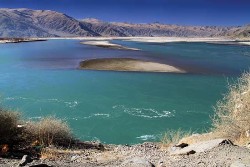Tibetet Segítő Társaság Sambhala Tibet Központ
Tibet Support Association Sambhala Tibet Center
székhely / telephely H-Budapest I. Attila út 123..
(00-36) 70 431 9343 (00-36)70 944 0260 (06-1)782 7721
sambhala@tibet.hu www.tibet.hu tibetpress.info
Facebook/Sambhala Tibet Központ Facebook/Tibett Segítő Társaság
MagnetBank/ 16200010-00110240
IBAN/HU94 16200010 00110240 00000000 SWIFT/HBWEHUHB
(1%) adószám/ 18061347-1-41
nyitva tartás/hétköznap 12.00-20.00 hétvégén előadás függő
» tibeti művészet» lapszemle.hu» thetibetpost.com» eastinfo.hu» rangzen.net» ChoegyalTenzin» tibet.net» phayul.com» DalaiLama.com» vilaghelyzete.blogspot.com» Videók» Linkek» TibetiHírek» Szerkesztőség
China planning to divert Brahmaputra at the peril of India and Bangladesh/ENG
2017. október 30./Phayul.com/TibetPress
eredeti cikk
By Tenzin Dharpo DHARAMSHALA, Oct. 30: In the absence of a water sharing treaty between China and downstream nations like India and Bangladesh on the mighty Brahmaputra river, China’s ambitious plan to divert the trans-boundary river is bound to take a toll on the environment of the geography as well as the simmering relations between the Asian giants.
DHARAMSHALA, Oct. 30: In the absence of a water sharing treaty between China and downstream nations like India and Bangladesh on the mighty Brahmaputra river, China’s ambitious plan to divert the trans-boundary river is bound to take a toll on the environment of the geography as well as the simmering relations between the Asian giants.
Chinese engineers are reportedly testing techniques that could be employed to build a 1,000 km tunnel to divert water from Tibet to Xinjiang, a desert region in northwest China. The proposed project to divert the Yarlung Tsangpo, as is known in occupied-Tibet to Taklamakan desert in occupied-Xinjiang, if completed will be the world’s longest tunnel.
South China Morning Post quoted Zhang Chuanqing, a researcher at the Chinese Academy of Sciences’ Institute of Rock and Soil Mechanics saying that the 600km tunnel in China’s Yunnan region is a “demonstration project” and it will provide answers to the feasibility of the proposed project on the Brahmaputra. An engineer who is part of the project has said that the project will turn the barren Xinjiang into California.
While diverting such a huge river with a drainage area of over half a million square kilometers, the environmental consequences is of grave concern, especially for the downstream nations such as India and Bangladesh which are heavily reliant on the river.
The developments could further hamper the touchy relations between India and China which have just recently recovered from a military standoff in Doklam. The project could, experts say, be a factor in further escalating the tension in the geo-political status quo in the region.
Environmentalists have expressed concern over China’s excessive damming and reckless development of the rivers that originate from occupied-Tibet such as the 512 MW Zangmu dam. Tibet, referred to as the ‘water tower of Asia’, provides freshwater to nearly 2 billion people.
